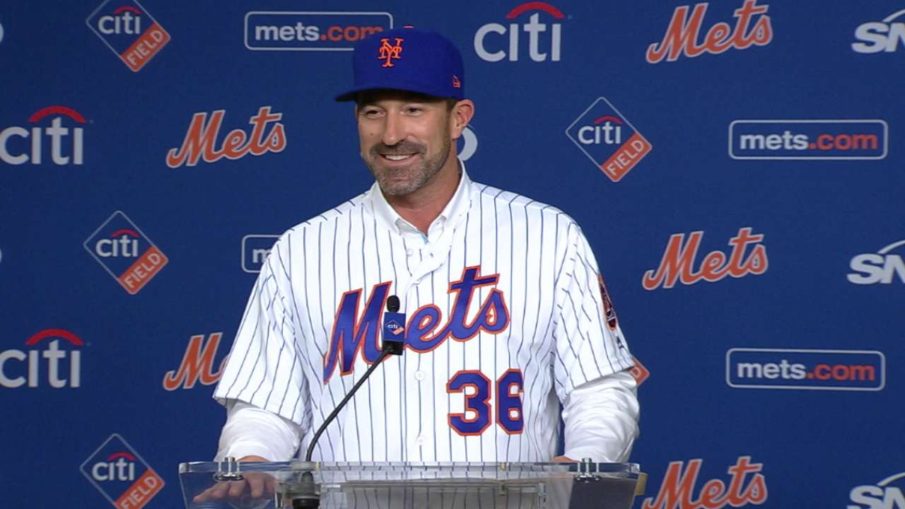
New Mets skipper Mickey Callaway has been a busy man so far this week, appearing on a slew of radio programs and television shows, giving mostly general statements on the team.
However, Callaway sat down with John Harper of the New York Daily News on Tuesday and talked about pitching, which will be the key ingredient to success on this team.
Harper said in his article that the former Cleveland Indians pitching coach won’t necessarily be “a slave to analytics” and will use the “eye test” when monitoring his starters.
“The first time you take a guy after five innings when he’s given up only one hit, and you don’t have good evidence of why you’re taking him out, then all those analytical numbers are thrown out the window,” Callaway said. “They don’t make sense any more because you now have a different player who is mentally affected by the decision that you made.
“So you have to use your eyes, your knowledge. You have to listen to the players. You have to reasons that they understand when you take them out, and they have to accept it.
“You have to make sure they accept it in a really good way so it doesn’t affect their next outing, or all that prep work that you did, and all those numbers don’t have value anymore because you have a different player — because he’s pissed.”
Callaway also told Harper that he believes throwing is the key to keeping starters healthy, not limiting them any way possible. His goal is to get the pitchers to a point where they can throw 240 innings. For a point of reference, only Jacob deGrom threw 200 in 2017.
“The funny part about throwing? You throw more, you stay healthier,” he said. “It’s not, ‘Ah, you know what, you need to rest today because you’re a little sore.’
“You have to push through that soreness sometimes. Now if you’re injured, you need rest. But if it’s just soreness, you have to rest, recover, and push through it.”
In Cleveland, Callaway would make sure his starters were hydrated. He said if they weren’t, they were more likely to pull a muscle. The pitchers also wore Motus sleeves, which measure the amount of stress being put on the elbow on their off days, from throwing to various other workouts.
“We found out the most stressful activity (on the elbow) was when they were lobbing the ball, just playing catch at the very beginning of their catch games.
“It’s because they’re not using their bodies, their legs, to throw, and their arms are late,” he said. “When they stride out, use their legs, use the mechanics they’re going to use in the game, so their arm get to high-cocked position when their front foot lands, and everything is on time and it’s less stressful.
“So that’s when we started telling our pitchers that every time they throw, even if it’s just playing catch, they should throw as if they’re pitching in a game.”
From a team whose pitching staff was decimated by injuries this past year, we’ll just have to see if throwing more truly does help rid them of the disabled list stints.















